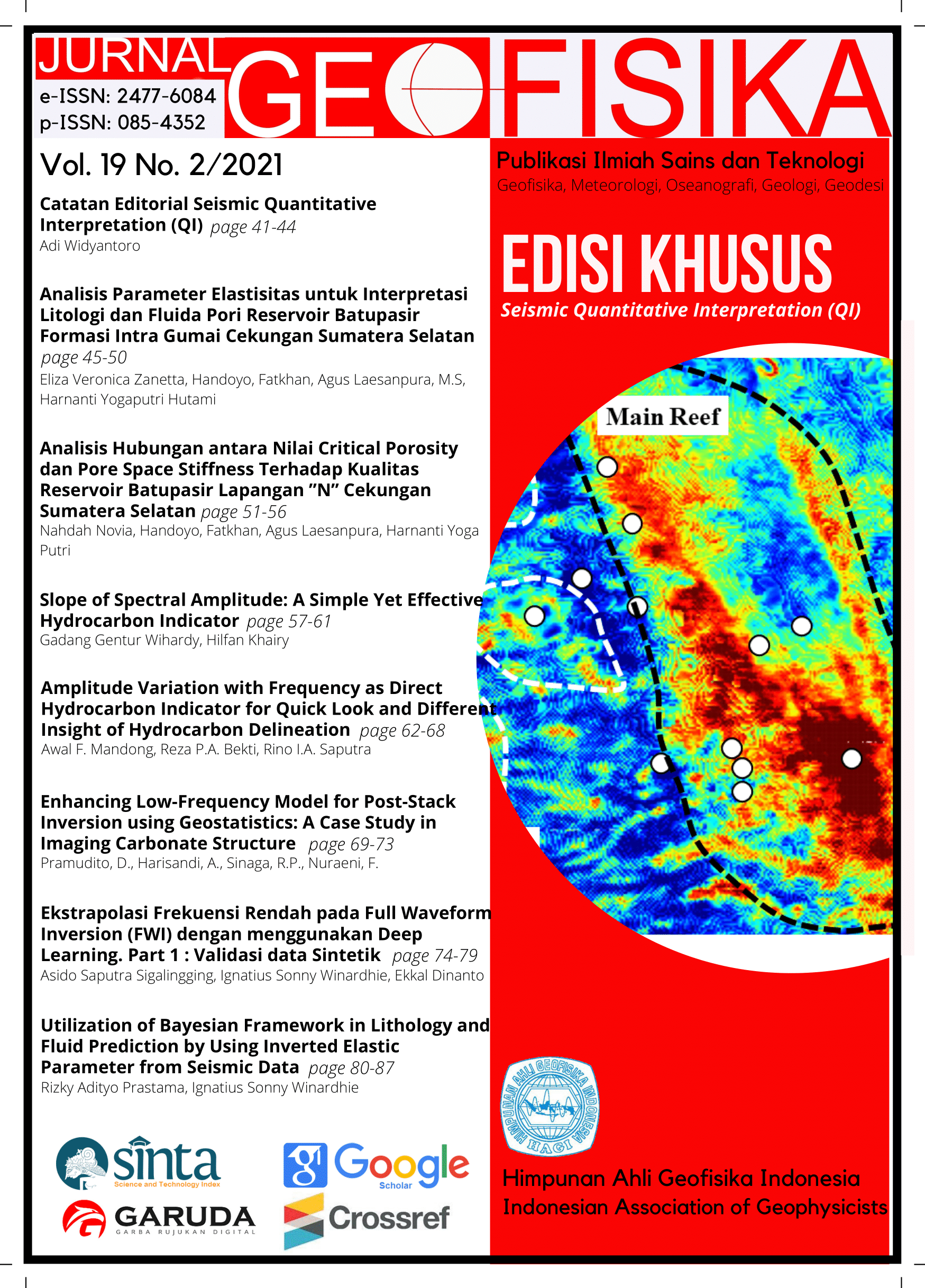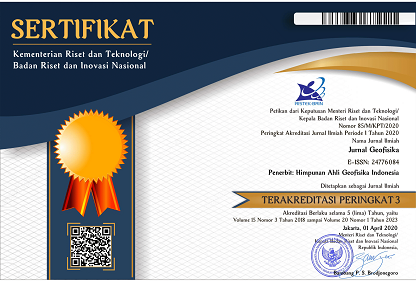Enhancing Low-Frequency Model for Post-Stack Inversion using Geostatistics: A Case Study in Imaging Carbonate Structure
Keywords
Absolute Impedance, carbonate reservoir, cokriging, low frequency modelAbstract
Post-stack model based seismic impedance inversion can be a fast and efficient first step in deriving reservoir properties based on seismic data. It can further be used as an input for quantitative interpretation, however behind that seemingly oversimplified process we should not forget the nature of bandlimited seismic data and how we should carefully extract and model the low-frequency component. In the worst case, the low frequency or background impedance model (LFM) might not even be possibly recovered due to the limited logging data interval. In this paper, we will demonstrate how to create an absolute impedance volume to delineate porous reefal carbonate reservoir that has low acoustic impedance by accurately constructing a low frequency model aided with cokriging. The result is an LFM that can accomodate all available well data but still honoring local geological structures and continuities.
References
Jarvis, K., 2006. Integrating Well and Seismic Data for Reservoir Characterization: Risks and Rewards. ASEG Extended Abstracts, 2006(1), pp.1-4.
Kalkomey, C., 1997. Potential risks when using seismic attributes as predictors of reservoir properties. The Leading Edge, 16(3), pp.247-251.
Patra, D.H., Noeradi, D. and Subroto, E., 2012. Tectonic Evolution at Musi High and Its Influence to Gumai Formation as an Active Source Rock at Sopa Field, South Sumatera Basin. AAPG International Conference and Exhibition.
Pendrel, J., 2021. Low frequency models for seismic inversions: strategies for success.
Ray, A. K. and Chopra, S., 2016. Building more robust low-frequency models for seismic impedance inversion. First Break, 34(5).
Ryacudu, R., 2008, Tinjauan Stratigrafi Paleogen Cekungan Sumatra Selatan, Sumatra Stratigraphy Workshop, IAGI, p. 99-114.
Sams, M. and Carter, D., 2017. Stuck between a rock and a reflection: A tutorial on low-frequency models for seismic inversion. Interpretation, 5(2), pp.B17-B27.

This work is licensed under a Creative Commons Attribution 4.0 International License.
The copyright of all articles belongs to the authors. All other copyrights is held by the Journal











